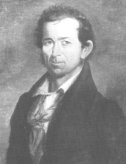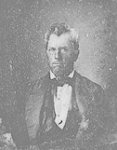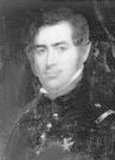The Grass War And The Siege Of Bexar Beginning in October 1835, Texans laid siege to the town of Bexar (San
Antonio). The last engagement before the Texans stormed the town came
Erastus "Deaf" Smith The Texans were eager to stop the reinforcements, and had high hopes
that the pack animals were carrying silver coins -- back pay for the Mexican
troops. General Edward Burleson sent 40 cavalry under James Bowie and
100 infantry under William H. Jack to stop the reinforcements and seize
the supply train. The two cavalry forces skirmished west of town, with Cos sending infantry
to the aid of the supply train. The Texas forces pushed the Mexican troops
into the town and seized the supply train of 40 pack animals. The casualties
numbered four Texans wounded, three Mexicans dead and 14 wounded. When the Texans opened the booty carried by the animals, they discovered
not silver coins but grass, intended to feed the army animals. The siege of Bexar came to an end a little over a week later, when on
December 5, 1835, the Texas volunteers entered the town and began the
house-to-house fighting that resulted in the surrender of Cos on December
9. Mexican units were garrisoned at the Alamo from 1803 until Texan forces
laid siege to Bexar (present-day San Antonio) from mid-October until December
1835. Stephen
F. Austin Originally the army in the field served under Stephen
F. Austin, popularly elected as commander in chief. Success on the battlefield
led to his demanding surrender of General Martin Perfecto de Cos, the
Mexican commander and brother-in-law of President Santa Anna. The demand
was refused in words echoing the later defiance by Travis: "he
would defend the place until he died, if he had only ten men left with
him—" By mid-November, however, Austin had been sent as one of
three commissioners to the United States, charged with obtaining recognition
and support from other governments. The army was running low on supplies,
and the various commanders were divided in their desire to take Bexar Edward Burleson Ben Milam Milam was killed by a sniper bullet on December 7, but
the conflict continued from house to house until December 9, when General
Cos, at last, asked for surrender terms. The capitulation was signed
on December 11, 1835. Cos and his men were allowed to return to Mexico
with the understanding that none would return to fight against the Texans.
The retreat effectively removed the last Mexican soldiers garrisoned
in Texas. Most of the volunteers returned to their homes, convinced
that the war was over. General Cos later was captured at the Battle
of San Jacinto. No © Copyright.
|
Page Crafted By Corky
The Pine Island Webwright








